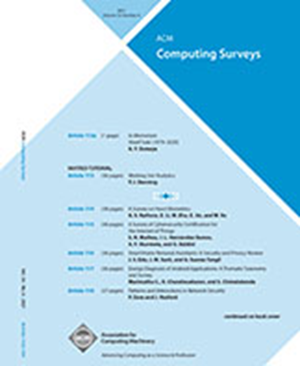A Tutorial on Discriminative Clustering and Mutual Information
IF 28
1区 计算机科学
Q1 COMPUTER SCIENCE, THEORY & METHODS
引用次数: 0
Abstract
To cluster data is to separate samples into distinctive groups that should ideally have some cohesive properties. Today, numerous clustering algorithms exist, and their differences lie essentially in what can be perceived as “cohesive properties”. Therefore, hypotheses on the nature of clusters must be set: they can be either generative or discriminative. As the last decade witnessed the impressive growth of deep clustering methods that involve neural networks to handle high-dimensional data often in a discriminative manner; we concentrate mainly on the discriminative hypotheses. In this paper, our aim is to provide an accessible historical perspective on the evolution of discriminative clustering methods and notably how the nature of assumptions of the discriminative models changed over time: from decision boundaries to invariance critics. We notably highlight how mutual information has been a historical cornerstone of the progress of (deep) discriminative clustering methods. We also show some known limitations of mutual information and how discriminative clustering methods tried to circumvent those. We then discuss the challenges that discriminative clustering faces with respect to the selection of the number of clusters. Finally, we showcase these techniques using the dedicated Python package, GemClus , that we have developed for discriminative clustering.判别聚类与互信息教程
聚类数据是将样本分成不同的组,理想情况下,这些组应该具有一些内聚性。今天,存在许多聚类算法,它们的区别本质上在于什么可以被视为“内聚属性”。因此,必须设置关于集群本质的假设:它们可以是生成的,也可以是判别的。随着过去十年见证了深度聚类方法的令人印象深刻的增长,这些方法涉及神经网络以判别方式处理高维数据;我们主要集中在判别假设上。在本文中,我们的目标是为判别聚类方法的演变提供一个可访问的历史视角,特别是判别模型的假设性质如何随着时间的推移而变化:从决策边界到不变性批评。我们特别强调了互信息如何成为(深度)判别聚类方法进步的历史基石。我们还展示了互信息的一些已知限制,以及判别聚类方法如何试图绕过这些限制。然后,我们讨论了判别聚类在聚类数量选择方面面临的挑战。最后,我们将使用专用的Python包GemClus来展示这些技术,GemClus是我们为判别聚类而开发的。
本文章由计算机程序翻译,如有差异,请以英文原文为准。
求助全文
约1分钟内获得全文
求助全文
来源期刊

ACM Computing Surveys
工程技术-计算机:理论方法
CiteScore
33.20
自引率
0.60%
发文量
372
审稿时长
12 months
期刊介绍:
ACM Computing Surveys is an academic journal that focuses on publishing surveys and tutorials on various areas of computing research and practice. The journal aims to provide comprehensive and easily understandable articles that guide readers through the literature and help them understand topics outside their specialties. In terms of impact, CSUR has a high reputation with a 2022 Impact Factor of 16.6. It is ranked 3rd out of 111 journals in the field of Computer Science Theory & Methods.
ACM Computing Surveys is indexed and abstracted in various services, including AI2 Semantic Scholar, Baidu, Clarivate/ISI: JCR, CNKI, DeepDyve, DTU, EBSCO: EDS/HOST, and IET Inspec, among others.
 求助内容:
求助内容: 应助结果提醒方式:
应助结果提醒方式:


